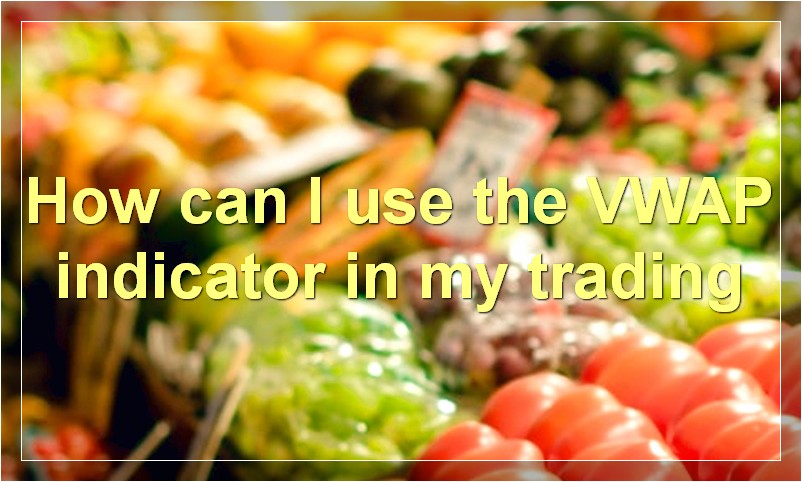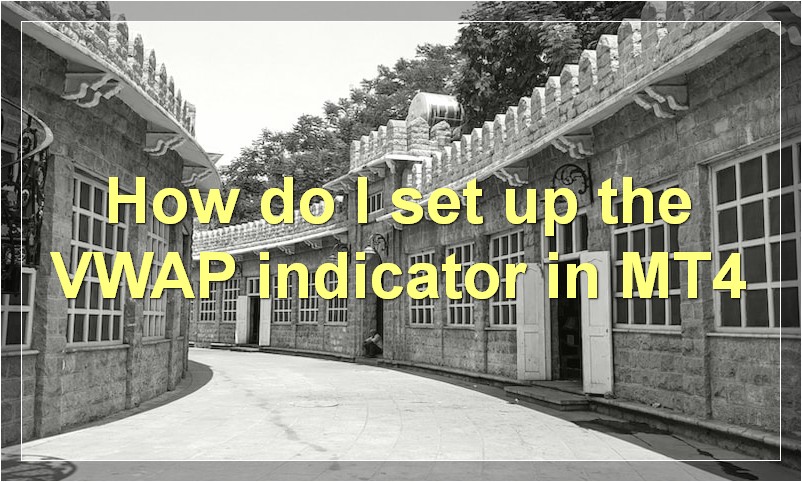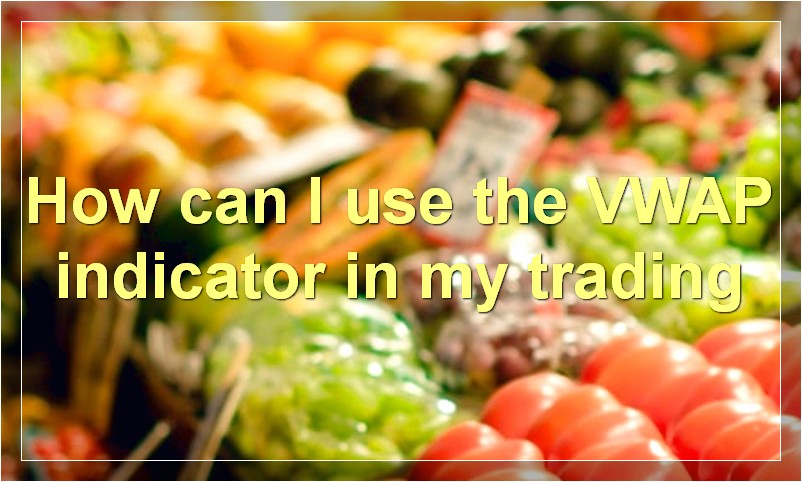There are a lot of different indicators that day traders use to make decisions, and it can be tough to keep track of them all. The VWAP indicator is one that can be very helpful, but it’s often misunderstood. In this article, we’ll explain what the VWAP indicator is and how you can use it to your advantage.
What is the VWAP indicator
The VWAP indicator is a technical analysis tool that is used to measure the average price of a security over a given period of time. The VWAP indicator can be used to identify trends and support and resistance levels. The VWAP indicator is calculated by taking the sum of the volume weighted prices for all trades over a given period of time and dividing by the total number of trades.
The VWAP indicator is a useful tool for traders who want to get an idea of where the market is trading. The VWAP indicator can be used to buy when the market is trading below VWAP and sell when the market is trading above VWAP. The VWAP indicator can also be used to help with trade execution. For example, if a trader wants to buy 1000 shares of a stock, they can use the VWAP indicator to help determine the best price to buy at.
The VWAP indicator is not perfect, but it can be a helpful tool for traders who want to get an idea of where the market is trading.
How can I use the VWAP indicator in my trading

The VWAP indicator can be incredibly useful for traders who are looking to get an idea of the overall market sentiment. By taking into account the volume of trade that is happening at different prices, the VWAP indicator can give traders a good idea of where the market is heading. This can be particularly useful for those who are looking to enter or exit a trade.
Does the VWAP indicator work on all timeframes
The VWAP indicator does not work on all timeframes. It is only effective on longer timeframes such as the daily or weekly timeframe. On shorter timeframes, the VWAP indicator is less accurate and can produce false signals.
What are the pros and cons of using the VWAP indicator
The volume-weighted average price (VWAP) is a trading benchmark used by traders that gives the average price of a security based on its volume.
The VWAP indicator can be used as a benchmark to measure the performance of a security or portfolio, or as a trading order execution strategy.
Some pros of using the VWAP indicator include:
-It can help traders find the best entry and exit points for their trades.
-It is helpful in analyzing market trends.
-It can be used as a trend following or mean reversion strategy.
Some cons of using the VWAP indicator include:
-It can be lagging, so it may not be useful for intraday trading.
-Trades executed at the VWAP may not always fill at that price, so there is some risk involved.
-It requires a lot of data to be accurate, so it may not be useful for very small time frames.
What are some common VWAP trading strategies
There are a number of common VWAP trading strategies that traders use to take advantage of market conditions. Some of the more popular strategies include:
1. Using VWAP as a support or resistance level: Many traders use VWAP as a key level where they will look to enter or exit trades. If the market is trading below VWAP, they may look to enter long trades, and if the market is trading above VWAP they may look to enter short trades.
2. Trading with the trend: Another common strategy is to trade with the overall trend. So, if the market is in an uptrend, traders may look to buy when the market pullbacks to VWAP. And if the market is in a downtrend, traders may look to sell when the market rallies back up to VWAP.
3. Use VWAP as a trailing stop: Some traders will use VWAP as a trailing stop for their trades. This means that they will set their stop loss at a certain percentage below or above VWAP, depending on whether they are long or short. This can help them lock in profits as the market moves in their favor.
4. Look for divergences: Some traders also look for divergences between price and VWAP. This can be an indication that the market is about to move in the opposite direction.
5. Use VWAP crosses: Another strategy that some traders use is to look for crosses of VWAP. This can be used as a signal to enter or exit trades. For example, if the market is trading below VWAP and then crosses above it, some traders will view this as a buy signal.
How do I set up the VWAP indicator in MT4

If you’re looking to add the VWAP indicator to your MT4 chart, here’s a quick and easy guide on how to do it.
1. Right click on your chart and select “Indicators” from the dropdown menu.
2. In the Indicators window, scroll down until you find “VWAP” and double-click it.
3. The VWAP Indicator settings window will pop up. You can leave all the settings at their default values and simply click “OK”.
4. You should now see the VWAP indicator plotted on your chart. If you want to change the appearance of the indicator, simply right-click on it and select “Properties” from the menu.
How do I interpret the VWAP indicator
The VWAP indicator is a technical analysis tool that is used by traders to help them identify opportunities in the market. The VWAP stands for Volume Weighted Average Price and is calculated by taking the sum of all traded prices divided by the total volume traded. The VWAP indicator can be used on any time frame, but is most commonly used on hourly charts.
The VWAP indicator is a valuable tool for traders because it can help them find trading opportunities that they might otherwise miss. For example, if the price of a stock is trading below the VWAP, it may be an indication that the stock is undervalued and there could be an opportunity to buy. Conversely, if the price of a stock is trading above the VWAP, it may be an indication that the stock is overvalued and there could be an opportunity to sell.
While the VWAP indicator can be a helpful tool, it is important to remember that it is just one indicator and should not be used in isolation. It is always best to use a combination of indicators to make trading decisions.
What are some common mistakes traders make with the VWAP indicator
The VWAP indicator is a popular tool among traders, but there are some common mistakes that are made with it. One mistake is using the VWAP as a support or resistance level. The VWAP can be a good indicator of where the market is going, but it should not be used as a level to enter or exit a trade. Another mistake is using the VWAP as the only indicator. The VWAP should be used in conjunction with other indicators to get a better picture of the market.
How can I improve my results with the VWAP indicator
If you’re looking to improve your results with the VWAP indicator, there are a few things you can do. First, make sure you’re using it on the right time frame. The VWAP is most effective on longer time frames, so if you’re using it on a 5-minute chart, you’re not going to get the best results. Second, don’t use the VWAP as a standalone indicator. Combine it with other technical indicators to get a better picture of what’s going on in the market. Finally, remember that the VWAP is just one tool in your arsenal. Don’t put all your eggs in one basket and rely on it for all your trading decisions.
Are there any other indicators that work well with the VWAP indicator
The VWAP indicator is a popular tool among traders, but it can be difficult to interpret. Are there any other indicators that work well with the VWAP indicator?
The VWAP indicator is a lagging indicator, so it is often used in conjunction with other indicators to get a better sense of market momentum. Some popular indicators to use with VWAP are RSI, MACD, and CCI.

